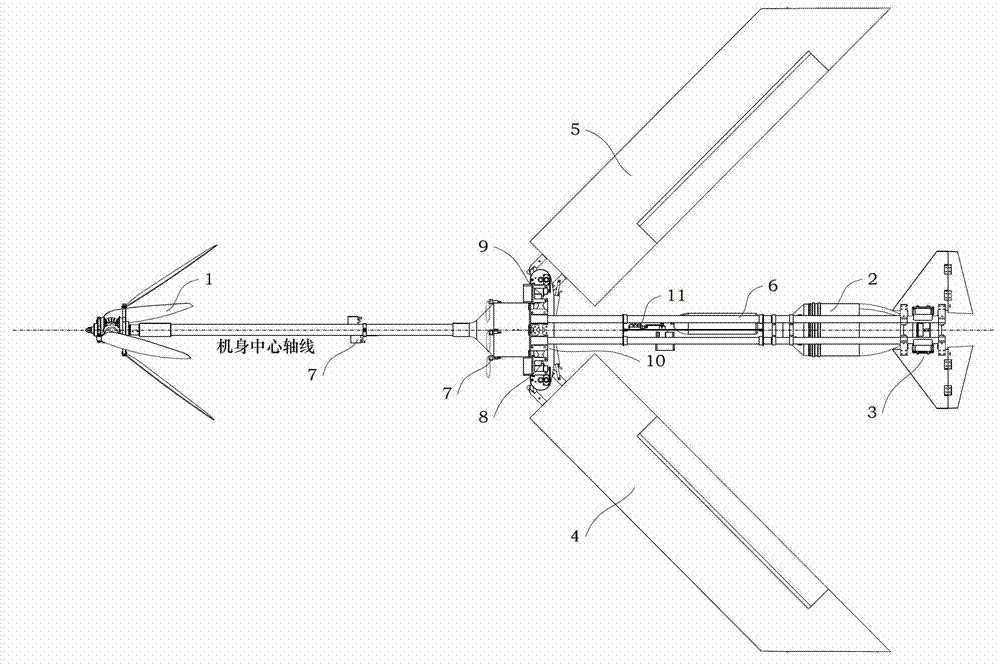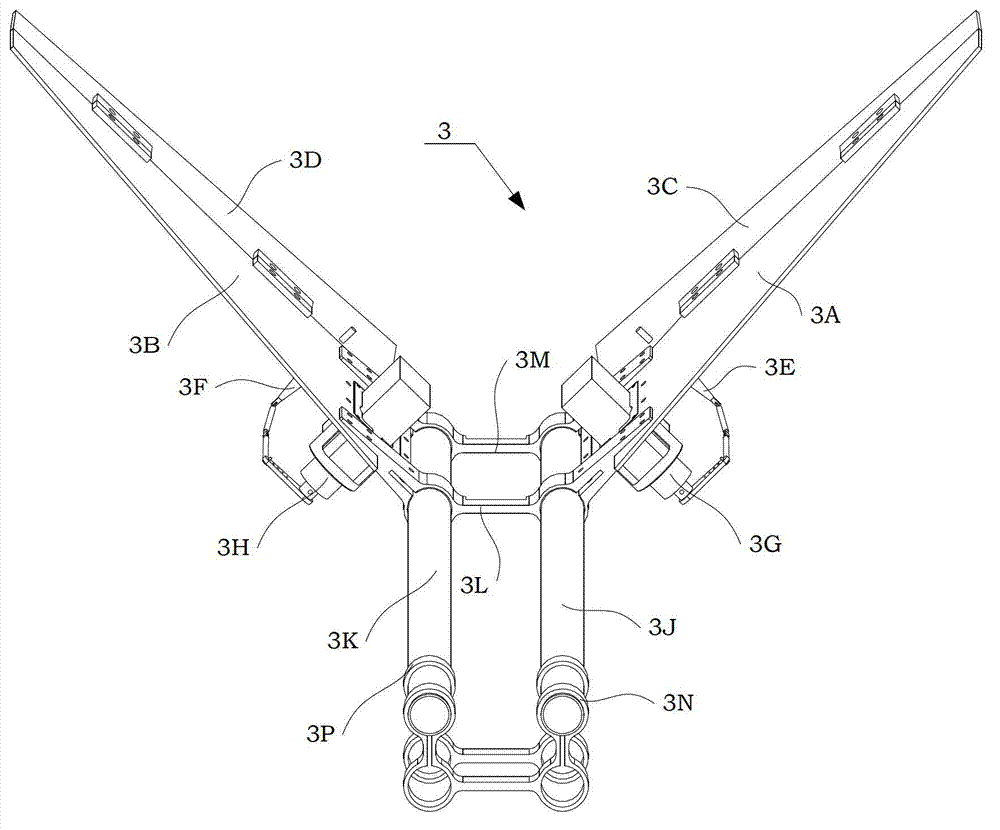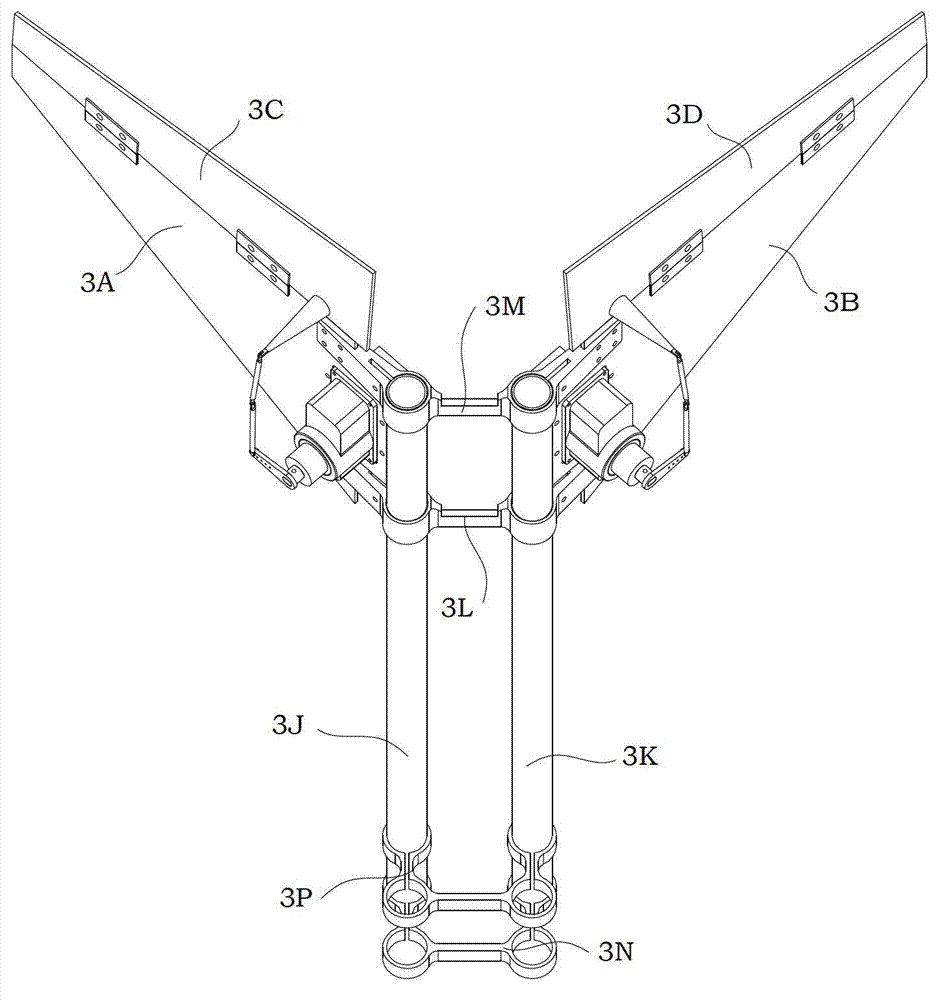V-shaped empennage device suitable for sea and air across amphibious unmanned aerial vehicle
An unmanned aerial vehicle and tail wing technology, applied in the tail wing field, can solve the problems of increasing the weight of the body, increasing the resistance of part of the tail wing, and the failure of the steering gear, and achieving the effects of simplifying the structure, reducing the weight of the structure, and reducing the resistance.
- Summary
- Abstract
- Description
- Claims
- Application Information
AI Technical Summary
Problems solved by technology
Method used
Image
Examples
Embodiment Construction
[0063] The present invention will be further described in detail below in conjunction with the accompanying drawings.
[0064] A top view structure suitable for amphibious UAVs across sea and air such as figure 1 As shown, the UAV includes a coaxial anti-propeller assembly 1, an underwater propulsion assembly 2, a V-tail assembly 3 (hereinafter also referred to as a V-tail device), a left wing assembly 4, a right wing assembly 5, and a beam assembly 6 , Water and air bag erection assembly 7, left wing drive assembly 8, right wing drive assembly 9, folding wing support body 10 and folding and unfolding conversion assembly 11;
[0065] Wherein, the left wing assembly 4, the left wing drive assembly 8, the right wing assembly 5, the right wing drive assembly 9 and the folding wing support body 10 constitute the foldable wing part of the drone;
[0066] Wherein, the left wing assembly 4 has the same structure as the right wing assembly 5, and is installed symmetrically with the ...
PUM
 Login to View More
Login to View More Abstract
Description
Claims
Application Information
 Login to View More
Login to View More - R&D
- Intellectual Property
- Life Sciences
- Materials
- Tech Scout
- Unparalleled Data Quality
- Higher Quality Content
- 60% Fewer Hallucinations
Browse by: Latest US Patents, China's latest patents, Technical Efficacy Thesaurus, Application Domain, Technology Topic, Popular Technical Reports.
© 2025 PatSnap. All rights reserved.Legal|Privacy policy|Modern Slavery Act Transparency Statement|Sitemap|About US| Contact US: help@patsnap.com



